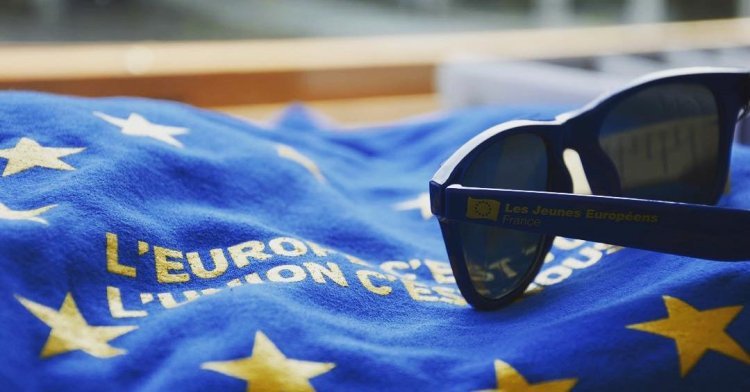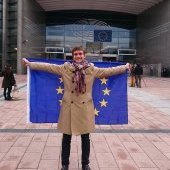With the launch of an interactive online platform, https://futureu.europa.eu, the EU’s long-awaited Conference on the Future of Europe has finally kicked off. What is the platform about, and how can citizens use it? And what will happen to the ideas published on the platform? TNF’s Juuso Järviniemi offers a quick guide to the platform.
Publishing and endorsing ideas
On the platform, citizens can publish their ideas about any topic related to the future of Europe. The platform offers nine ready-made categories such as “European democracy”, “Digital transformation”, “Health” and “Migration”. Alternatively, citizens can post comments under the “Other ideas” category.
The platform invites users to “endorse” each other’s ideas. At a press briefing to mark the launch of the platform, Guy Verhofstadt, an MEP sitting on the board coordinating the Conference, explained that popular ideas from the platform will help shape future stages of the Conference.
Attending an organising events
For organisations and active citizens, the platform offers a chance to organise an event and market it as an official part of the Conference. The web platform features a map of upcoming events, instructions for event organisers and reports of events that have already taken place.
Dubravka Šuica, the EU Commissioner working on the Conference, said that events may range from “living room level” local gatherings to large, national-level events organised by national institutions like parliaments. She hinted at the possibility of European Commission funding for organisations arranging events, while adding that the decision has not yet been finalised.
On Twitter, Daniel Freund, another MEP involved in planning the Conference, said that “the Commission plans to favour ideas gathered from well-organised events”.
Using machine translation to bring down language barriers
The online platform is available in all the 24 official EU languages. Citizens can publish comments in their own language, and comments are automatically translated into other languages.
Language barriers are often cited as a stumbling block hindering true pan-European debate between citizens. With that in mind, the Conference online platform is a novel attempt to allow all Europeans to speak directly to each other.
The next steps in the Conference
The Conference is scheduled to conclude by next spring, but the calendar for the rest of the initiative is not yet fully set.
Besides the online platform and events held by citizens, the EU institutions will convene randomly selected citizens’ panels, as well as a Conference ‘plenary’. Europe Day on 9 May is likely to mark a formal opening ceremony for the Conference, and an occasion to share more information about the next key dates.
What is certain is that the online platform will accompany the Conference until the end – and perhaps beyond. The institutions have now invested in a high-end tool for citizen participation, so one cannot help but ask, why not keep it for the future? The Commissioner Dubravka Šuica gave promising signals: “If this multilingual digital platform works, we can of course extend it and it can be a permanent mechanism, but we haven’t decided on this yet.”
Will the Conference lead to real change?
The big question on everyone’s lips is what will be done with the conclusions of the Conference. At today’s launch press briefing, journalists challenged the institutions on their preparedness to start reforming the EU treaties if that is what the citizens ask for.
Speaking as a representative of the EU Council presidency, Portugal’s Secretary of State for European Affairs Ana Paula Zacarias was reserved, to say the least: she simply said that the EU institutions’ joint position on the Conference does not mention treaty change.
Guy Verhofstadt preferred to see the glass half full: “There is no mention of the necessity of treaty change, or of the impossibility of treaty change. [...] For the Parliament that’s a very good thing because that makes everything possible, and it will depend completely on the outcome of the citizens’ panels, the work in the Conference plenary and the results that come from there.”
The institutions’ difficulties in negotiating a joint declaration guiding the Conference were one prime reason why the initiative is only launched now, despite Ursula von der Leyen already announcing it in July 2019. Tensions between Ana Paula Zacarias and Guy Verhofstadt in the launch press briefing were a poignant illustration that the disagreements on the Conference are not over.
While Verhofstadt said that that “the sky is the limit”, the Portuguese minister celebrated the start of the Conference in curt terms: “it is what it is”.
What all three can agree on is that it’s now up to the citizens to make the best of it.
JEF will use the Conference online platform actively, and encourages its members to do so. Members of the JEF-Europe Executive Board and Secretariat have already published several ideas on the platform: on a European federation, on a stronger European Parliament, on an EU-wide constituency in the European elections,, on the Spitzenkandidaten system, on continuing EU enlargement, on a rule of law mechanism, on a European Banking Union, on a European fiscal union, and on the EU as a global actor.
What ideas have you published? Share them with us by tweeting to us, or by posting a comment on our Facebook page!


Follow the comments: |
|
